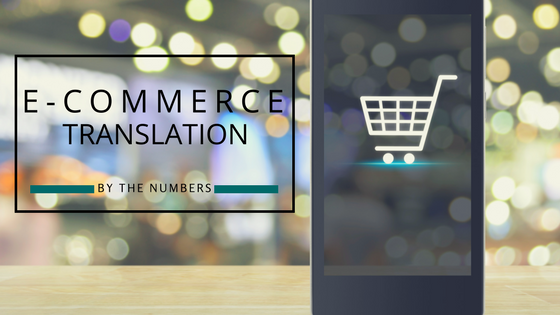
Global E-Commerce Translation: Expanding By the Numbers
If you have a successful e-commerce business, then perhaps it’s time to diversify into the global market by investing in language translation for your website. But where do you start? Which languages do you focus on for translation? We have some suggestions!
There are over 3,885,567,619 active internet users in the world. Incredible, right? Investing in expansion of your e-commerce business is not only a smart idea, but potentially very profitable. To get the biggest return on investment with language translation, there is much to take into consideration.
Regional Approach
If you are region agnostic and simply looking for the most consumer saturated areas, then the region you should examine first for language translation is Asia. The Asian continent is home to 49.7% of active internet users globally, with 1,938,075,631 (and counting) total users.
Another statistic to consider regarding business expansion investment in the region, is that there is still potential for growth. At this juncture, a mere 46.7% of the population is active on the internet. Compared to North America’s 88.1% penetration rate, we could see Asia edge out the rest of the world in a very short amount of time.
After Asia in regional investment consideration is Europe, coming in with 17% of global internet users. The only downside in considering language translation in Europe, is that there is less room for growth. Currently, 80.2% of the European population is active on the internet. While growth is still expected, there will not be explosive growth like regions with relatively low internet penetration rates.
Next up is Africa, with a total of 388,376,491 active internet users. With just over 10% of the total number of world internet users living in Africa, the continent has a high growth potential in the coming years. The current penetration rate for African nation citizens on the Internet is 31.2%, which leaves plenty of room to grow.
Language Approach
If you don’t want to focus on regions, but rather languages, it may be hard to choose which languages will be best for an e-Commerce expansion. The following is a list of languages, ranked according to total population of native speakers globally.
- Chinese – While Chinese is a group of related languages with regional dialects, the most common is Mandarin with approximately 848 million native speakers. The majority of Chinese speakers reside in China, Hong Kong and Taiwan.
- Spanish – 399 million speakers in Spain and Latin America
- English – 335 million speakers in the UK, USA. Canada, Australia, etc.
- Hindi – 260 million speakers in India.
- Arabic – 242 million speakers in Western Asia and North Africa.
- Portuguese – 203 million speakers in Portugal and Brazil.
- Bengali – 189 million speakers in India and Bangladesh.
- Russian – 166 million speakers in Russia and other post-Soviet states.
- Japanese – 128 million speakers in Japan.
- Lahnda – 88.7 million speakers in Pakistan and parts of India.
Top Languages to Consider
Based on the number of native speakers of languages worldwide, and concentration of active internet users, here is a list of languages that might make sense for your e-commerce expansion. Keep in mind that based on your own individual market research, some of these languages may not be applicable.
- Chinese
- Japanese
- German
- French
- Korean
- Portuguese
- Russian
- Spanish
- Hindi
- Arabic
In the end, no matter which languages you decide to invest in for translation, don’t forget to take into consideration the components of market research and localization to get the best return. If you are ready to think outside of the English-speaking box, the international e-commerce world may become your oyster once you expand beyond your borders.
